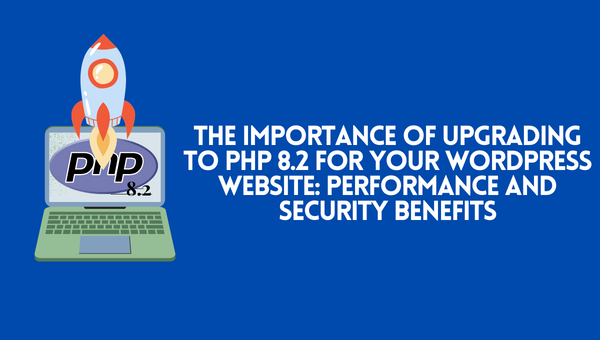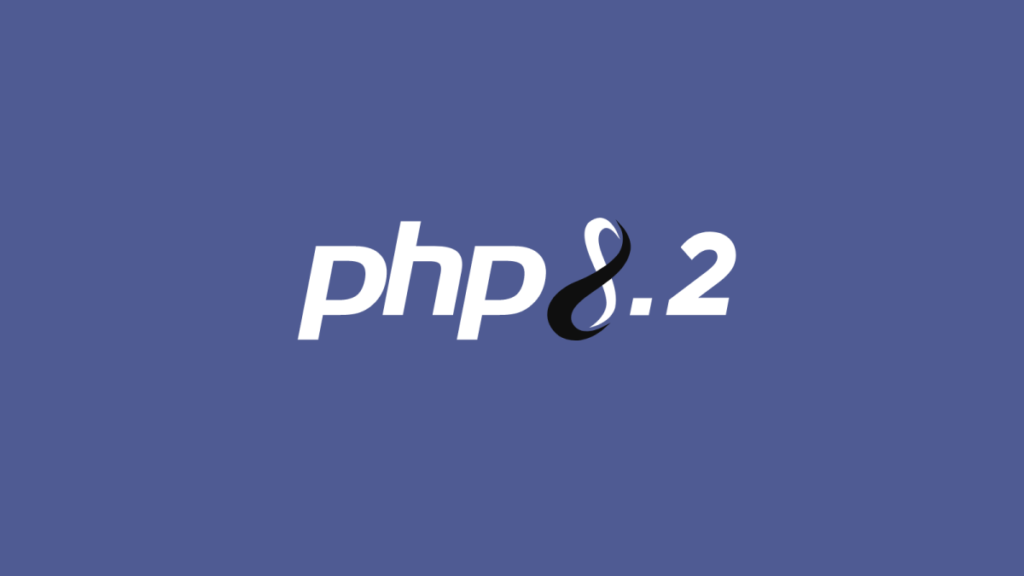
The Importance of Upgrading to PHP 8.2
The importance of upgrading to PHP 8.2 for a WordPress website cannot be overstated. PHP, or Hypertext Preprocessor, is the programming language that WordPress is built on. As such, it is a crucial component of any WordPress website. Upgrading to PHP 8.2 offers a number of benefits that can greatly improve the performance and security of a WordPress website.

First and foremost, PHP 8.2 offers significant performance improvements over previous versions of PHP. This is particularly true for websites that rely heavily on dynamic content and user interactions. In particular, PHP 8.2 features a new Just-In-Time (JIT) compiler, which can greatly increase the speed and efficiency of code execution. This can result in faster page load times, improved responsiveness, and a better overall user experience.
In addition to performance improvements, PHP 8.2 also brings a number of new features and improvements that can help to improve the security of a WordPress website. For example, PHP 8.2 includes a new security feature called “Union Types” which allows developers to specify the type of data that a variable or function can accept. This can help to prevent common security vulnerabilities such as SQL injection attacks.
Another important security feature in upgrading to PHP 8.2 is the “Strict Types” feature, which enforces stricter type-checking in PHP code. This can help to prevent common coding errors that can lead to security vulnerabilities, such as type mismatches.
Another important aspect of upgrading to PHP 8.2 is the introduction of attributes. Attributes are a way to add meta-data to your code, like annotations in Java. This allows for more flexibility and better code organization.
In addition to these new features, upgrading to PHP 8.2 also includes a number of bug fixes and improvements to existing features. This can help to improve the stability and reliability of a WordPress website, and can also help to reduce the risk of security vulnerabilities.
All in all, upgrading to PHP 8.2 is an important step for any WordPress website. The performance and security improvements that it offers can greatly enhance the user experience and help to protect against common security threats. It is important to note that upgrading to PHP 8.2 requires that the website’s theme and plugins are also compatible with the new version, so it is important to test the website after upgrading.
How to upgrade to PHP 8.2: A Step-by-Step Guide
Upgrading to PHP 8.2 can be a bit of a process, but with the right steps, it can be done relatively easily. Here is a step-by-step guide to help you upgrade your WordPress website to PHP 8.2:
- Check Your Current Version: Before you can upgrade to PHP 8.2, you need to know what version of PHP your website is currently running on. You can check this by creating a PHP info file, or by using a plugin such as “Display PHP Version”
- Backup your website: Before making any updates, it’s essential to backup your website. This way, in case something goes wrong, you can easily restore your website to its previous state.
- Check for compatibility: Before upgrading, it’s important to check if all the plugins and themes used on the website are compatible with PHP 8.2. The best way to do this is to check the plugin and theme’s documentation or contact the developer to see if they have plans to update their product to support PHP 8.2.
- Test on staging environment: Before making any changes to the live website, it’s a good practice to test the website on a staging environment. This will allow you to check for any compatibility issues or errors before they affect the live website.
- Update PHP: Once you’ve confirmed that your website and its plugins are compatible with PHP 8.2, you can go ahead and update. If you’re using a shared hosting service, you should contact your hosting provider and ask them to update your PHP version. If you’re using a VPS or dedicated server, you can update PHP using the command-line interface (CLI) or through the control panel provided by your hosting provider.
- Test your website: After upgrading, it’s important to thoroughly test your website to make sure everything is working properly. You can use tools like Google Analytics or New Relic to monitor your website’s performance.
- Monitor your website: After upgrading, you should monitor your website for any issues that may arise. This includes checking error logs, and reviewing analytics data to ensure that your website is performing as expected.
- Keep your website updated: Keep your website updated with the latest version of PHP and other components. Updating your website will help to ensure that it stays secure, performs well, and remains compatible with the latest features and technologies.
Compatibility Checks
If a website’s theme and plugins are not compatible with PHP 8.2, upgrading to the new version can cause the website to break. This can result in errors and malfunctions, such as missing features or broken pages. In the worst case, it can cause the website to become completely inaccessible.
It’s important to note that not all plugins and themes are updated to support the latest version of PHP immediately. Some may take time for developers to update their code and make it compatible with PHP 8.2. It’s best to check the plugin’s or theme’s documentation or contact the developer to see if they have plans to update their product to support PHP 8.2.
Before upgrading to PHP 8.2, it’s essential to check if all the plugins and themes used on the website are compatible with the new version. The best way to do this is to check the plugin and theme’s documentation or contact the developer to see if they have plans to update their product to support PHP 8.2.
It’s always recommended to backup your website before making any updates. This way, in case something goes wrong, you can easily restore your website to its previous state. Additionally, it’s also a good idea to test the website on a staging environment before making any changes on the live website. This will allow you to check for any compatibility issues or errors before they affect the live website.
Conclusion
In conclusion, upgrading to PHP 8.2 is a crucial step for any WordPress website. The performance and security improvements that it offers can greatly enhance the user experience and help to protect against common security threats. It is important to note that upgrading to PHP 8.2 requires that the website’s theme and plugins are also compatible with the new version, so it is important to test the website after upgrading. It’s always recommended to backup your website before making any updates.
